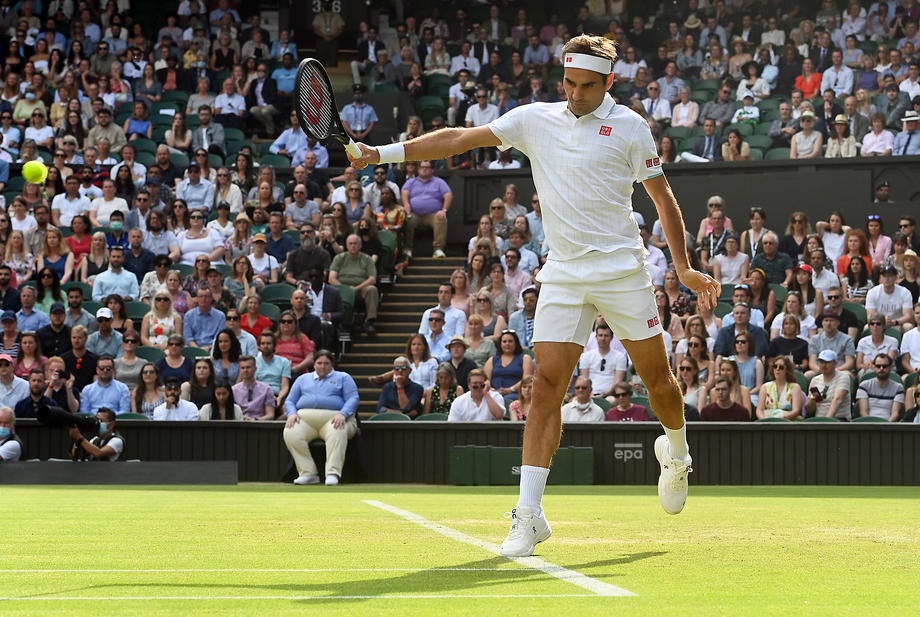- Stars Join Forces for Eisenhower Cup Return to Indian Wells on March 4
- Ken Thomas Broadcasting from Georgia’s Rome Tennis Open
- Solinco Launches All-New Whiteout V2 Racquet
- Stringlet: Serving Up Tennis Inspiration With A Twist
- Davis Cup qualifying to feature Brazil vs. France and Spain vs. Switzerland
- 2025 US Open Expands to Sunday Start
- Tennis Channel To Broadcast U.S. Davis Cup Qualifier vs. Tawain
- Stefanos Tsitsipas Receives Rotterdam Wild Card From Richard Krajicek
- Tien and Basavareddy to Play Delray Beach Open Qualifying
- Australian Open Tennis 2025 Ends with Madison Keys and Jannick Sinner As Winners By Alix Ramsay
- 2025 Australian Open Final Draws
- Jannik Sinner Sweeps Alexander Zverev for Second Straight Australian Open Title
- Ricky’s pick for the Australian Open final: Sinner vs. Zverev
- Australian Open Draws and Order Of Play for Sunday, January 26, 2025
- Madison Keys Upsets Defending Champion Aryna Sabalenka in Australian Open Final Thriller
Alix Ramsay Reports To 10sBalls | A Roasting Hot 2019 Australian Open Tennis Continues
- Updated: January 24, 2019
The roof of Rod Laver Arena closing due to extreme heat during the women’s singles semifinal match between Petra Kvitova of Czech Republic and Danielle Collins of USA at the Australian Open Grand Slam tennis tournament in Melbourne, Australia, 24 January 2019. EPA-EFE/MAST IRHAM
They love a good rule, do the Australians. In a very large country with very few inhabitants, there seems little else for the government to do other than think up new ways to control the locals.
There are laws about anything and everything. Did you know that in Western Australia, it is an offence to be in possession of more than 50kg (or 110lbs) of potatoes? Or that in Victoria, the state in which Melbourne resides, it was thought to be an offence to change a light bulb if you were not a qualified electrician. Nonsense, said an official from Energy Safe Victoria. That is just a silly urban myth. And then said official came up with the legislative paperwork to prove it.
“While the Electricity Safety Act makes it illegal to do your own electrical work if you are not licensed, changing a light bulb and removing a plug from a socket were specifically exempted from this requirement under Order in Council G17.”
That’s good to know. If the government could find a way to dictate the colour of your underpants – and find a way to tax you in the process – they would.
All of which brings us to the Australian Open. This year, Tennis Australia has brought in a new heat policy, the snappily named “Australian Open Heat Stress Scale”. It has replaced the old fashioned wet-bulb thermometer thingummy doodah, that oddly named gadget that nobody could explain and nobody understood. In theory, this new policy, then, is a good thing.
Except that the Australians, being Australian, adhere religiously to their new rule. When yours truly first came to Australia 20 years ago (I was seven at the time… ahem), they had rules and lots of them. But the average Aussie ignored them: “Ah, look, mate, no one is going to stop me taking my stubby and my smokes into the pool on a hot day…” These days, every rule is enforced to the point of obsession and the Aussies put up with it.
So when the weather forecast predicted scorching temperatures for Thursday, those running the Open thought ‘ah, we have a rule about that’. And that rule works on a scale of 1-5 with level one being ‘nice and sunny’ and five being ‘holy hell it’s hot – run for cover’. How they arrive at each level remains a mystery but we presume there is some science behind it.
Five years ago, we had four consecutive days of temperatures over 40degs Celsius (or 104F) with a meltingly high high of 43.4C (just over 110F). And that was in the shade. The on-court temperature at that point was 62 degrees or 144F. Only then was the decision taken to suspend all play until it cooled down.
That day, a couple of photographers cracked an egg on one of the backcourts and took pictures of it frying in the sun. It was only when security spotted them did they realise that the now perfectly cooked comestible would not come off the court surface for love nor money. But the point had been proved: it was ludicrously hot.
That was when the chief medical officer of the tournament, one Dr Tim Wood, defended the policy to let play continue in the days leading up to 43 degree furnace.
“We evolved on the high plains of Africa chasing antelope for eight hours under these conditions,” he said to the BBC back then. He omitted to mention that the score line in those days tended to be Antelope 1, Humans 0 and that, as a species, a lot of us left the heat of the high plains to move somewhere cooler where the antelope moved more slowly. We also did not invent tennis until the end of the 19th century and we invented it in Britain where it rains for most of the summer. Dr Tim Wood is no longer the medical officer for the Australian Open. These two points are not necessarily related.
Anyway, Petra Kvitova and Danielle Collins knew it was going to be a scorcher when they set to work. By the time they began their warm-up, the Heat Stress Scale had reached 4.1. Quite what that meant, nobody knew. Half way through the warm-up, it was up to 4.3.
Outside in Garden Square, the public area with the huge TV screen that is usually heaving for the big matches, was deserted. A few brave souls – eight of them – huddled under the sparse shade of the gum trees but other than that, there was not a soul to be seen. On court, where the ticket prices ranged from AUS$104 in the nosebleeds to AUS$461 in the posh bits, two vast swathes of seats were empty: the seats with no shade.

Petra Kvitova of Czech Republic cools down during a break in action against Danielle Collins of the USA during their women’s singles semifinal match at the Australian Open Grand Slam tennis tournament in Melbourne, Australia, 24 January 2019. EPA-EFE/MAST IRHAM
Petra and Danielle got to work. In the first game, the heat scale had risen to 4.5 and by the fifth game, it sat at 4.8.
Everyone knew what was coming. Everyone knew the temperature was going to rise and rise so why didn’t the match start with the Rod Laver Arena roof closed? Because rules is rules and this is Australia.
For 35 minutes, the two women huffed and puffed and sweated. The air temperature in the city was 38 degrees so it was at least 15 to 20 degrees hotter than that on court. But on they played. And then, after 35 minutes and at 4-4, the decision was made to shut the roof. We had hit ‘5’ on the heat scale and now we were allowed to be sensible and get out of the sun.
The match was stopped, the roof was closed and the match changed. “I think they should start a match how they are going to end it,” Collins, the 7-6, 6-0 loser said. “Indoor tennis is a very different game.”
As for Kvitova, she was the first through to the final so had a little bit more time to recover than Naomi Osaka, the 6-2, 4-6, 6-4 winner over Karolina Pliskova. But she had also played eight games and 35 minutes in the blistering sun. Osaka played her whole semi-final under cover. And that is simply not fair.
Rules are fine and dandy but common sense is far more important where the players’ health and safety is concerned. Funnily enough, there doesn’t seem to be a rule about that in Australia.






